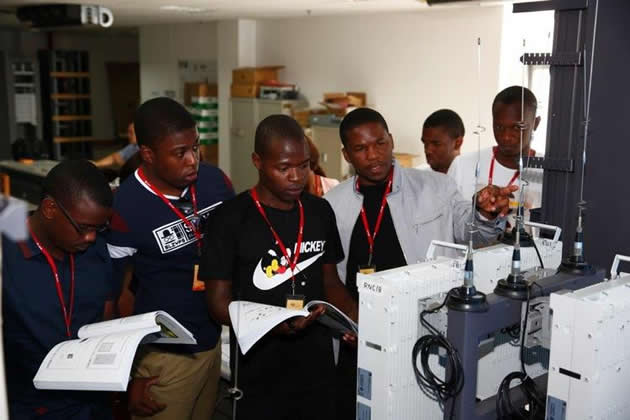Huawei boosts ICT sector

Technomag
Chinese President Xi Jinping’s two day State visit at the beginning of the month attracted a lot of attention and showed the strong political, economic and social ties between Zimbabwe and China.
One of the key areas where co-operation between the two countries has been particularly strong has been in information communication technology, with Chinese multinational networking and telecommunications equipment and services company Huawei Technologies Company Ltd playing a pivotal role in the implementation of several major ICT projects and the development of ICT personnel in the country.
Huawei has been instrumental in training of ICT students in various countries throughout the world through its Seeds for the Future program.
The programme seeks to develop local ICT talent, enhance knowledge transfers, and improve people’s understanding of and interest in the ICT industry.
It also encourages countries across different regions to participate in building digital society.
At least 10 Zimbabwe ICT students from different provinces and different universities including Zimbabwe Open University, Harare Institute Of Technology, Midlands State University, Chinhoyi University Of Technology, National University of Science and Technology in October this year travelled to Beijing and Shenzhen cities in China to receive such training under the programme.
What makes this programme unique is that it offers first-hand learning opportunities through interactions with Huawei experts and visits to Huawei labs.
The seeds can gain hands-on practice, witness live demonstrations of the latest ICT technologies, and attend workshops where they can meet Huawei’s senior executives and experts.
Through work placements in Huawei’s business departments, the students gain exposure to Huawei’s global business operations and cross-cultural management practices.
Huawei was recently honoured for its efforts when it received the Special Ministerial Award for contribution to ICT’s growth in Zimbabwe at the 2015 ICT Achiever’s Awards earlier this month.
The award was in recognition of Huawei’s fast delivery of the NetOne MBB project to set up the largest 4G network in Zimbabwe and its contribution for training the future ICT talents in Zimbabwe.
Romeo Arumando Shava, the representative of the 10 Zimbabwe Seeds made a presentation to introduce the sponsor training program and to demonstrate to the audience what ICT knowledge they have learned in Huawei HQ in Shenzhen, China and showed their contribution of the thesis that each students wrote about how ICT will enable the development of different industries to boost the social-economic development in Zimbabwe.
President Mugabe had a chance to visit the talent development programme called Zimbabwe Seeds for the Future on his State Visit to China in August last year during which he met with Huawei senior vice president Dafeng Li.
The ICT sector in Zimbabwe has much to benefit from the experience that Huawei brings in terms of education. Huawei recognises this and places importance on education as seen in this Future talent development programme that focuses on educating and engaging current and future generations in technological advancement and know-how.
“It is very important for us to support a new generation of scientists and researchers at universities in Zimbabwe, who can develop new ideas and discover new ways of making life better for people,” said Mr Albert Yang.
“Through our dedicated effort and commitment to the Zimbabwe market, we endeavour to work with local government and our business partners towards improved network quality, affordable rates and more value-added services for the benefit of the people of Zimbabwe”.
Founded in 1987, Huawei has grown from a $5 680 small firm to leading global company with sales of $46,5 billion in 2014.
As the world’s largest telecommunication and ICT solutions provider, Huawei serves 45 of the world’s top 50 telecom operators.
Its products and solutions are benefiting one third of the world’s population. With the joint effort of 170 000 employees in more than 170 countries, Huawei is ranked 285th of the Fortune 500 companies. It has 14 regional headquarters, 16 research and centres, 31 joint innovation centres and 45 training centres worldwide, creating maximum value for telecom operators, enterprises and consumers by providing competitive solutions and services.
Contributing to the sustainable development of the society, economy, and the environment, Huawei Technologies creates green solutions that enable customers to reduce power consumption, carbon emissions and resource costs.
Huawei envisions “an efficient and integrated digital logistics system which will enhance interconnectivity and interactivity — between people and people, people and things, and things and things “and hopes to “bridge the digital divide and promote high-quality broadband and connectivity for all”.
This connectivity would result in the creation of new platforms of communicating and living at consumer level and down to even the way business is conducted — a better, faster more efficient way.
Research and Development (R&D) is at the core of Huawei’s work in Shenzhen and indeed is the brain where those innovation comes from and goes to benefit peoples around the world.











Comments